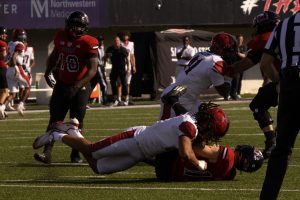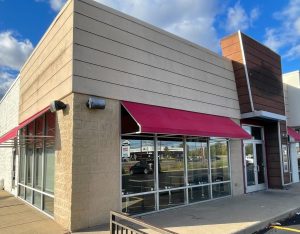Majority favors Ill. supercollider site
April 15, 1987
A majority of Northern Illinois residents favor locating the proposed superconducting supercollider in Illinois and support a state financial incentive to bring it here, according to a survey by the NIU Center for Governmental Studies and the NIU Public Opinion Lab.
The estimated cost of the SSC is $4.2 billion and about 5,000 high-tech jobs are expected to be brought to the area. The accelerator ring, almost 56 miles in circumference, will be the largest particle accelerator in the world when completed. The edge of the ring would be located on a part of the DeKalb-Kane County border.
Bob Welling, press secretary for 14th district Congressman Dennis Hastert, R-Oswego, said 600 people in DeKalb, DuPage, Kane and Kendall counties were surveyed randomly by phone about the SSC. Residents were asked if they supported locating the SSC in Illinois and if they had any concerns, Welling said.
About 55 percent said they were aware of the proposed SSC and knew something about the project, Welling said. After being informed of the project, he said 69 percent of those surveyed were in favor of locating the SSC in Illinois. Of the possible benefits the SSC might bring to Illinois, 36 percent listed jobs as the most important benefit, 23 percent did not know and 16 percent believed the most important benefit would be scientific advances, Welling said.
In addition, Welling said 58 percent of those surveyed were in favor of state financial incentives to bring the SSC to Illinois. The largest state incentive so far has been $500 million offered by Illinois in the form of land and cash for development, he said.
Of those surveyed, 40 percent thought the state’s offer was “just right,” 30 percent “felt it was too much,” 24 percent were uncertain and 6 percent “said (the state of Illinois) should offer more money,” Welling said.
Northern Illinois area residents also were surveyed about their concerns regarding possible hazards of the SSC, Welling said. The results showed 68 percent as having no concerns, 20 percent had concerns they could not identify and small groups expressed concern about radiation or explosion, he said.
Doug Dobson, director of the center and head of the survey, said there was some concern about tunneling up to 300 feet below the ground near people’s homes. However, 43 percent said they were not concerned with tunneling while 29 percent said they were, Welling said. Nearly 25 percent expressed “moderate concern,” he added.
Area residents “generally have a good feeling about the SSC,” Welling said. “Those who knew something about it (the SSC) were the most supportive. We who want the SSC located in Illinois have to reach out to the other 40 or so percent to get them informed as well,” he said.
The results of the survey indicate the more people know about the SSC the more they are likely to support it, Dobson said. “It’s clear there is a broad base of support for locating the SSC in Illinois,” he said.
In addition, the amount of support for state efforts to bring the SSC to Illinois was not expected, Dobson said. “We (the survey group) expected lower levels of both awareness and support (for the SSC), he said.
“He (Hastert) is pleased with the results of the survey,” Welling said. “The Congressman also feels the information will be helpful to the U.S. Department of Energy when it chooses the site for the SSC,” he said.
Welling said residents of other states competing for the SSC, particularly Texas, were against it. Residents there oppose the SSC “basically because they don’t know much about it,” he said.






